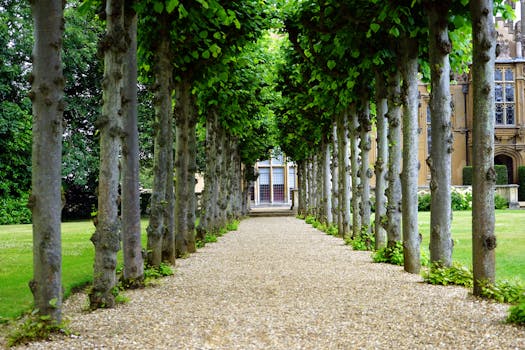Design a Vertical Garden on Your Balcony or Terrace to Enjoy Greenery in Small Spaces
In urban environments, where space is often at a premium, the concept of vertical gardening has gained immense popularity. A vertical garden, also known as a living wall, allows you to cultivate plants in a vertical space, making it an ideal solution for balconies and terraces. This article will guide you through the process of designing a vertical garden, highlighting its benefits, essential considerations, and practical tips to create your own green oasis.
The Benefits of Vertical Gardening
Vertical gardens offer numerous advantages, especially for those living in small spaces. Here are some key benefits:
- Space Efficiency: Vertical gardens maximize limited space by utilizing walls and vertical structures, allowing you to grow more plants in a smaller footprint.
- Improved Air Quality: Plants naturally filter pollutants and produce oxygen, contributing to better air quality in urban settings.
- Enhanced Aesthetics: A vertical garden can transform a dull balcony or terrace into a vibrant and inviting space, adding visual interest and beauty.
- Increased Privacy: Strategically placed plants can create a natural barrier, providing privacy from neighbors and reducing noise pollution.
- Food Production: Growing herbs, vegetables, and fruits in a vertical garden allows you to enjoy fresh produce right at your doorstep.
Essential Considerations for Designing Your Vertical Garden
Before diving into the design process, consider the following factors to ensure your vertical garden thrives:
- Sunlight Exposure: Assess the amount of sunlight your balcony or terrace receives throughout the day. Most plants require at least 6 hours of sunlight, so choose your location wisely.
- Weight Limitations: Ensure that your balcony or terrace can support the weight of the vertical garden, including soil, plants, and water. Consult with a structural engineer if necessary.
- Watering System: Consider how you will water your plants. A drip irrigation system can be an efficient solution, especially for larger installations.
- Plant Selection: Choose plants that are suitable for vertical gardening. Opt for a mix of trailing, climbing, and compact plants to create visual interest.
Steps to Create Your Vertical Garden
Creating a vertical garden can be a rewarding DIY project. Follow these steps to design your own:
1. Choose Your Structure
Select a vertical gardening system that suits your space and style. Options include:
- Wall-mounted planters
- Vertical garden kits
- Pallet gardens
- Hanging pots or shelves
2. Prepare the Wall or Structure
Ensure that the wall or structure is clean and suitable for planting. If using a wooden pallet, treat it with a non-toxic sealant to protect it from moisture.
3. Select Your Plants
Choose a variety of plants based on your sunlight conditions and personal preferences. Some popular choices include:
- Herbs: Basil, mint, and rosemary
- Flowers: Petunias, fuchsias, and nasturtiums
- Foliage: Ferns, ivy, and succulents
4. Planting and Maintenance
Carefully plant your chosen greenery, ensuring proper spacing for growth. Regular maintenance, including watering, pruning, and fertilizing, is essential for a thriving vertical garden.
Case Studies: Successful Vertical Gardens
Many urban dwellers have successfully implemented vertical gardens in their homes. For instance, a couple in New York City transformed their small balcony into a lush vertical garden using a modular planting system. They reported a significant improvement in their outdoor experience, enjoying fresh herbs and flowers while enhancing their apartment’s aesthetics.
Another example is the vertical garden at the CaixaForum in Madrid, designed by renowned botanist Patrick Blanc. This stunning installation showcases over 15,000 plants from various species, demonstrating the potential of vertical gardens in public spaces.
Conclusion
Designing a vertical garden on your balcony or terrace is an excellent way to enjoy greenery, even in small spaces. By understanding the benefits, considering essential factors, and following practical steps, you can create a beautiful and functional vertical garden that enhances your living environment. Whether you choose to grow herbs, flowers, or simply enjoy the aesthetic appeal, a vertical garden can transform your outdoor space into a vibrant oasis. Embrace the green revolution and start your vertical gardening journey today!
